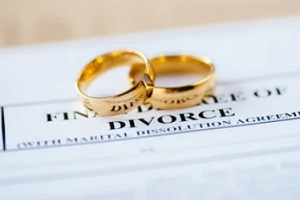Are you a United States citizen who wants to bring your non-citizen fiancé back to marry and reside with you in the states? If so, you must file for a K1 non-immigrant visa in order to be granted permission to do so.
A K1 visa, often referred to as a fiancé visa, enables a foreign citizen’s fiancé to visit the United States for the explicit purpose of marrying a United States citizen. Once in the United States, the foreign national fiancé can apply for a status change to become a legal permanent resident.
Although securing a K1 visa may appear straightforward at first, there are several obstacles to overcome before the visa can be granted. Furthermore, the foreign national – as well as the American sponsor – must both meet their respective eligibility requirements.
What Defines a “Fiancé?”
 A person who is an engaged partner is referred to as a fiancé. The couple must have met in person during the past two years in order to be eligible to apply for a fiancé visa. There are a few exceptions to this rule, including if the American sponsor had a severe hardship that prevented them from meeting the foreign citizen fiancé in person.
A person who is an engaged partner is referred to as a fiancé. The couple must have met in person during the past two years in order to be eligible to apply for a fiancé visa. There are a few exceptions to this rule, including if the American sponsor had a severe hardship that prevented them from meeting the foreign citizen fiancé in person.
The K1 visa applicant’s foreign fiancé must also consent to getting married within 90 days of their arrival in the United States. If they do not get married within 90 days, they risk deportation.
The petition must be filed while both the U.S. citizen and the visa applicant are legally free to marry and must remain so until their nuptials. All marriage regulations in the U.S. state where the marriage will occur must also be followed.
Conditions for Eligibility
In order to qualify for the K1 visa, the U.S. citizen to whom a foreign national intends to marry must have been born in the United States or one of its territories, obtained citizenship via a family member, or applied for and successfully obtained citizenship for themselves. In order to qualify for a K1 visa, couples must also fulfill the following criteria:
- The K1 visa is available to same-sex couples even if their home nation does not permit same-sex weddings. This is due to the fact that same-sex marriage is legal in the U.S., and U.S. law detrmines the qualifications for marriage.
- If either the U.S. citizen and/or the foreign fiancé were married in the past, the relevant party must present proof of divorce, annulment or (if relevant) a death certificate.
- A U.S. citizen must be the sponsor. Holders of U.S. green cards are ineligible to apply for K1 visas.
- The U.S. sponsor’s relationship with the foreign fiancée must be genuine, which can be demonstrated in part through correspondence, pictures, and written testimonials from acquaintances.
- In order to qualify, the U.S. sponsor must earn at least 100% of the federal poverty level at the time of application and at least 1250% of these standards when the foreign individual applies for a green card.
The 90-Day Period
 After entering the United States, a person’s K1 non-immigrant status will expire after 90 days have passed. The foreign fiancé and their children must depart the United States if the pair does not get married within this 90-day deadline, which cannot be extended. Immigration law in the United States considers it a violation if the foreign national fails to leave the country before the deadline – this can lead to deportation.
After entering the United States, a person’s K1 non-immigrant status will expire after 90 days have passed. The foreign fiancé and their children must depart the United States if the pair does not get married within this 90-day deadline, which cannot be extended. Immigration law in the United States considers it a violation if the foreign national fails to leave the country before the deadline – this can lead to deportation.
The U.S. sponsor may submit Form I-130, Petition for Alien Relative, if the U.S. partner and foreign fiancé get married after the 90-day window. The U.S. citizen or green card holder’s spouse can then use the marriage green card application process to apply for permanent residency.
Getting Married After a K1 Visa
The process of obtaining citizenship after receiving a K1 visa is frequently unclear. Once a person becomes qualified for a green card by marriage to an American citizen, they may apply for U.S. citizenship after holding a green card for a specific period of time. This implies that a foreign partner cannot immediately become a citizen of the United States even in the event that a United States citizen sponsors the relationship.
- After being married, the couple can follow the correct procedures to become citizens of the United States.
- The foreign spouse produces an application for status adjustment, and the U.S. sponsor files a petition on Form I-130 (Form I-485).
- The entire package is then sent by mail to USCIS.
- An interview will be required of both partners. If everything goes according to plan, the foreign spouse will be granted legal conditional resident status.
- For two years, the foreign spouse is still a conditional resident.
- The pair should file a joint petition (Form I-751) asking for the conditions on the residence to be waived about ninety days prior to the two-year period expires. USCIS may take many months to grant this request.
- A foreign spouse may submit a Form N-400 to request U.S. citizenship after living with their U.S. citizen partner for at least three years following the approval of conditional residence. Most people have to wait five years after acquiring a green card before they may seek citizenship in the United States.
 If the couple decides to divorce or end their relationship, the foreign partner needs to wait at least five years (after the date of acceptance for residence) before submitting an application for naturalization. Deportation may occur if the foreign spouse gets divorced before they are able to have the restrictions on their permanent residence lifted.
If the couple decides to divorce or end their relationship, the foreign partner needs to wait at least five years (after the date of acceptance for residence) before submitting an application for naturalization. Deportation may occur if the foreign spouse gets divorced before they are able to have the restrictions on their permanent residence lifted.
In the United States, nobody is forced to stay married. Additionally, if a couple with a fiancé visa decides to be divorced, it is not normal for the non-U.S. citizen’s green card to be canceled as a result. The green card may, however, be rejected if the application is pending and the pair is obligated to appear at an interview.
Speak with an Immigration Attorney
A K1 visa application and conversion to U.S. citizenship are laborious, complicated processes. A single mistake or omission can create delays that go on for weeks, months or (in more extreme cases) even years. Hiring a qualified immigration lawyer to handle the procedure on your and your partner’s behalf can bring you peace of mind while reducing the chance of delays.
Contact our knowledgeable experts at Pride Immigration right away to find out more about the K1 visa application procedure or to receive legal support for your case.
Beeraj Patel, Esq.
Latest posts by Beeraj Patel, Esq. (see all)
- What to Do If Your Employer Withdraws Support During the Green Card Process - March 31, 2025
- How a Green Card Attorney Can Help with Complex Immigration Cases Involving Family Separation - March 17, 2025
- How PERM Labor Certification Works for Small Business Employers Sponsoring Foreign Workers - February 24, 2025
